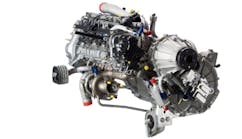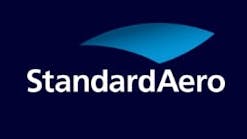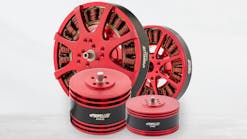Honeywell Is Developing and Testing New Software To Prevent Runway Incursions
Honeywell tested its latest software, Surface Alert, at Tyler Pounds Regional Airport in Tyler with the hopes it will enter the market soon while runway safety accidents like incursions, excursions and collisions become a bigger concern.
The Charlotte, N.C.-based aerospace company has been developing Surface Alert, also known as SURF-A for years. But after a close call in Austin and a runway collision in Tokyo killed five people, Honeywell has been more aggressively pursuing getting SURF-A to the market.
Runway incursions happen when a person, plane or vehicle is incorrectly on the runway at the same time as a plane. Excursions are when an aircraft veers off or overruns a runway. Both have become more common in recent years. Last year, there were 1,760 total incursions, according to the Federal Aviation Administration, 11% more than in 2021.
SURF-A is an alert system that uses GPS data and automatic dependent surveillance-broadcast equipment to detect if there are vehicles, planes or people on runways. It audibly alerts pilots if there is traffic on runways and displays text on the flight deck.
Once available, it will be able to be installed on large aircraft like a Boeing 757, 767, 737 and more.
Currently, the FAA requires that larger aircraft have onboard direct alerts for pilots to minimize the risk of airborne collisions, but that doesn’t extend to runways.
Though the FAA isn’t mandating technology like SURF-A, Honeywell has already begun reaching out to some of the major airlines across the world to get the technology installed in planes, said Thea Feyereisen, senior technical fellow of aerospace technologies at Honeywell.
“It takes literal blood on the runway prior to adoption. But if you look at all the indicators, we’re trending that way,” she said. “In general, airlines are hesitant to buy a safety system unless it’s mandated. So we’re looking into ways to incentivize airlines to equip smart runway technology.”
Despite the FAA not mandating the technology, the National Transportation Safety Board recently said it wants the FAA to investigate if innovations like Honeywell’s SURF-A can be implemented into more aircraft.
“NTSB recommended the FAA collaborate with aircraft and avionics manufacturers to develop a system that would alert flight crews of traffic on a runway or taxiway and traffic on approach to land and require that both newly manufactured and existing transport category airplanes have such systems installed,” NTSB said in a press release.
Though Honeywell declined to share exactly how much it will cost for companies to install SURF-A onto its aircraft, the asking price should be better than the company’s previous offerings like ASDE-X, said Adam Kress, Honeywell’s director of external communications.
“What we can say is that we do think it’s going to be a more economical solution than ASDE-X,” he said. “To be integrated across a large U.S. airline fleet, we don’t believe the cost per tail is anything prohibitive.”
Honeywell’s East Texas demo simulated the close call in Austin and used SURF-A to show how the plane would have reacted. It also demonstrated SURF-A along with its SMART X, a similar type of technology that audibly alerts pilots if they need to use their flaps, are going too high, are too fast or are unstable for landing. Alerts could come as early as 30 seconds before collision.
SMART X is already on the market across the industry and it’s at an important time. Excursions have cost operators $900 million in damages in recent years.
It’s unclear if SMART X along with SURF-A would have prevented events like the one in Austin, but it would have given pilots a better understanding of what was ahead of them, Feyereisen said.
“We reduce the risk of a runway incursion. We provide the pilot more time to make a decision,” she said. “The pilot still needs to make that decision. But, in general, pilots would receive an alert of a traffic situation that they might not be aware of.”
Honeywell has not yet disclosed when SURF-A will enter the market. But the company hopes to certify the technology by 2026 after conducting more tests. When it’s available to purchase, Feyereisen is confident that at least one group will push for it to be on their aircraft, she said.
“Pilots want this. In general, think about the density of operations, the changing demographics, so it’s not a hard sell for pilots,” she said. “Are you against a rearview camera or airbags in your car? No, and they want safety protections.”
©2024 The Dallas Morning News. Visit dallasnews.com. Distributed by Tribune Content Agency, LLC.





